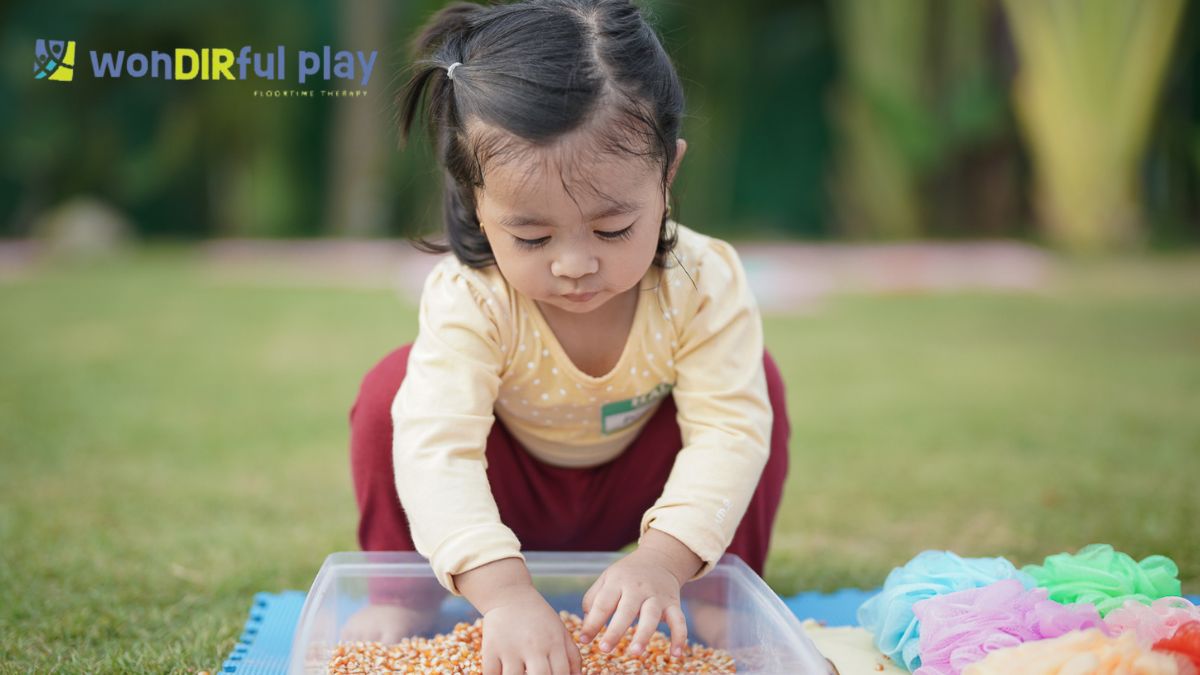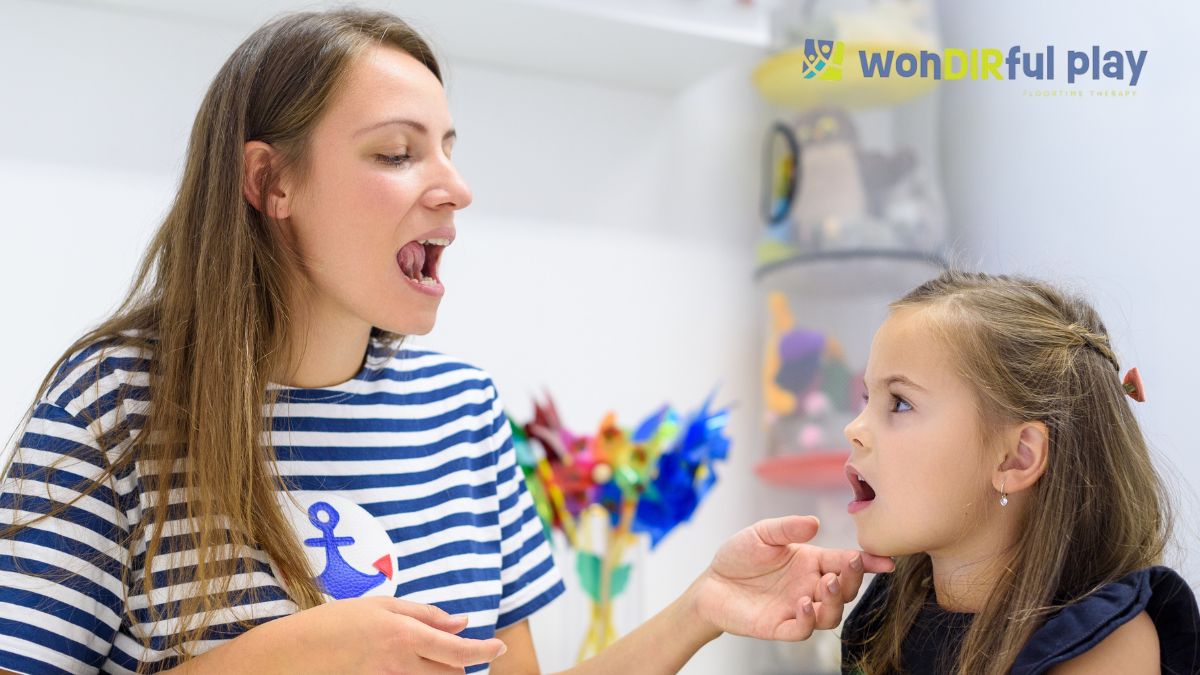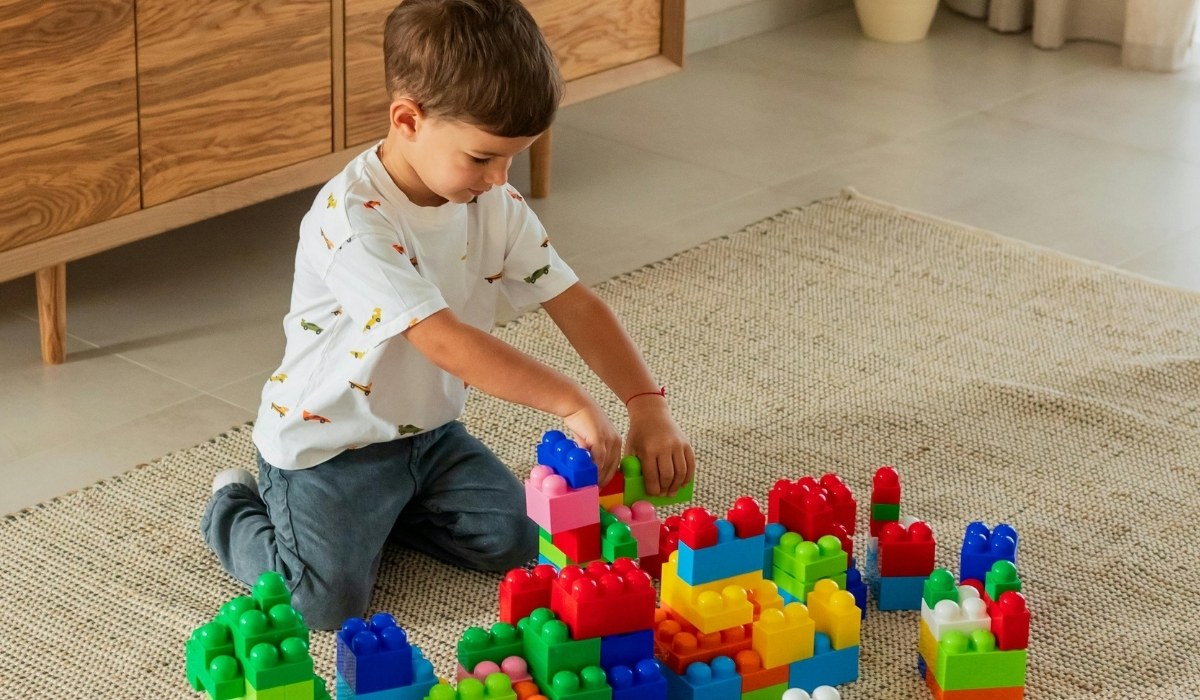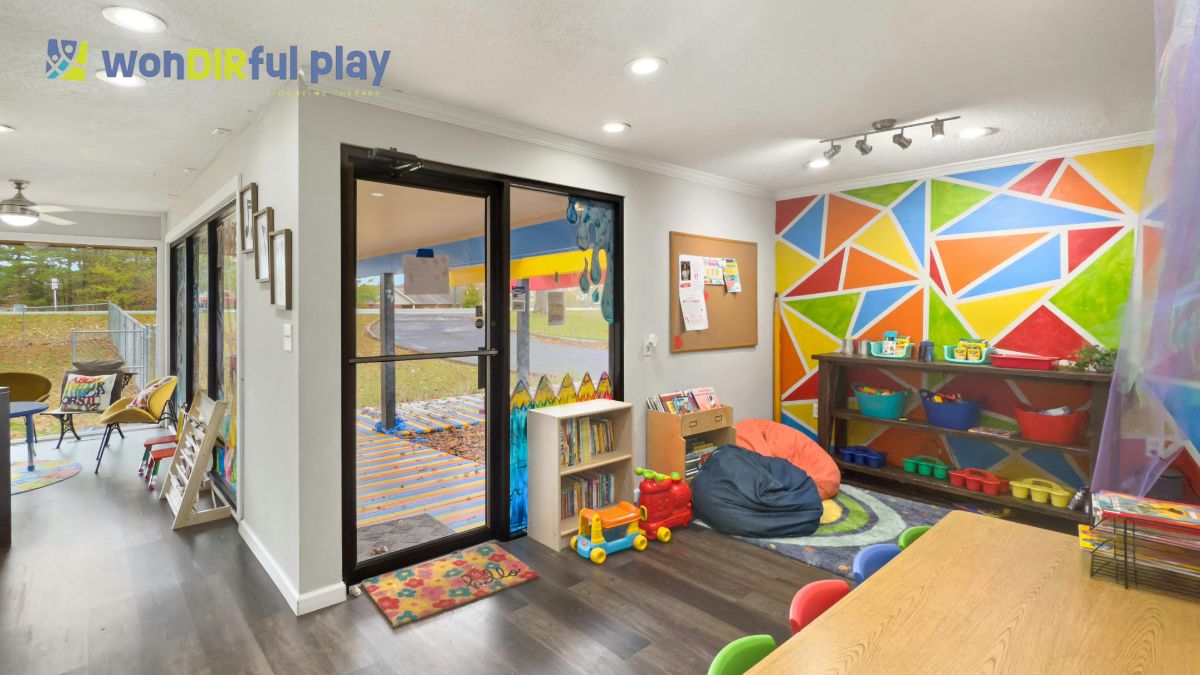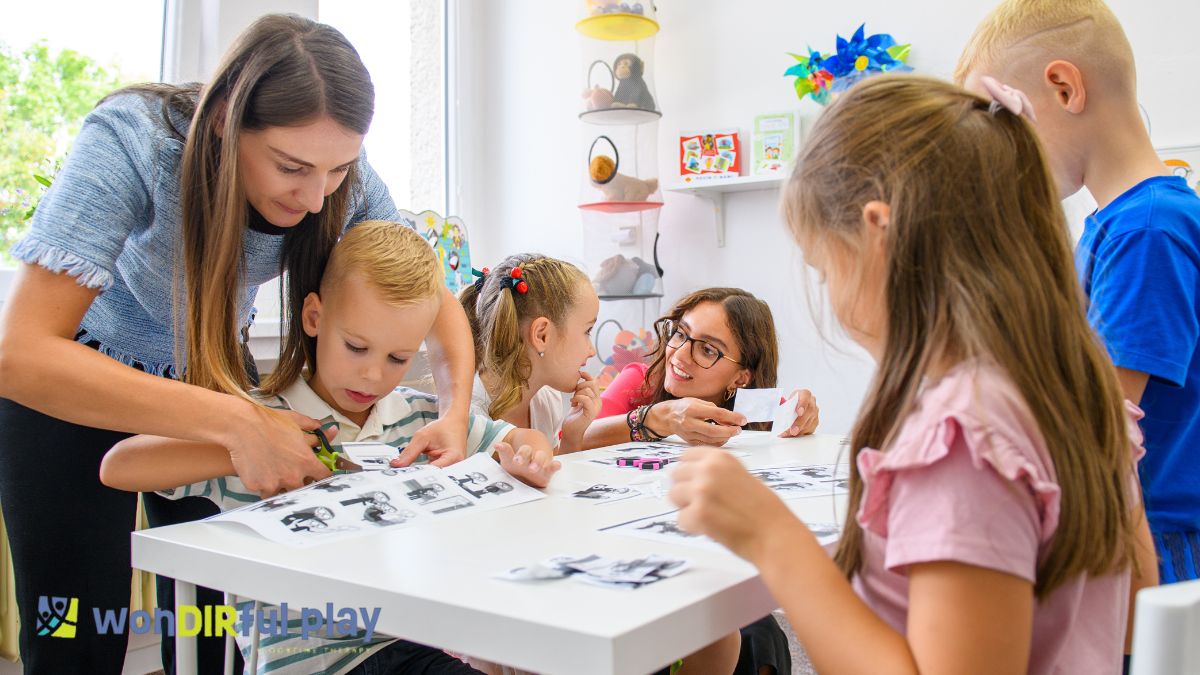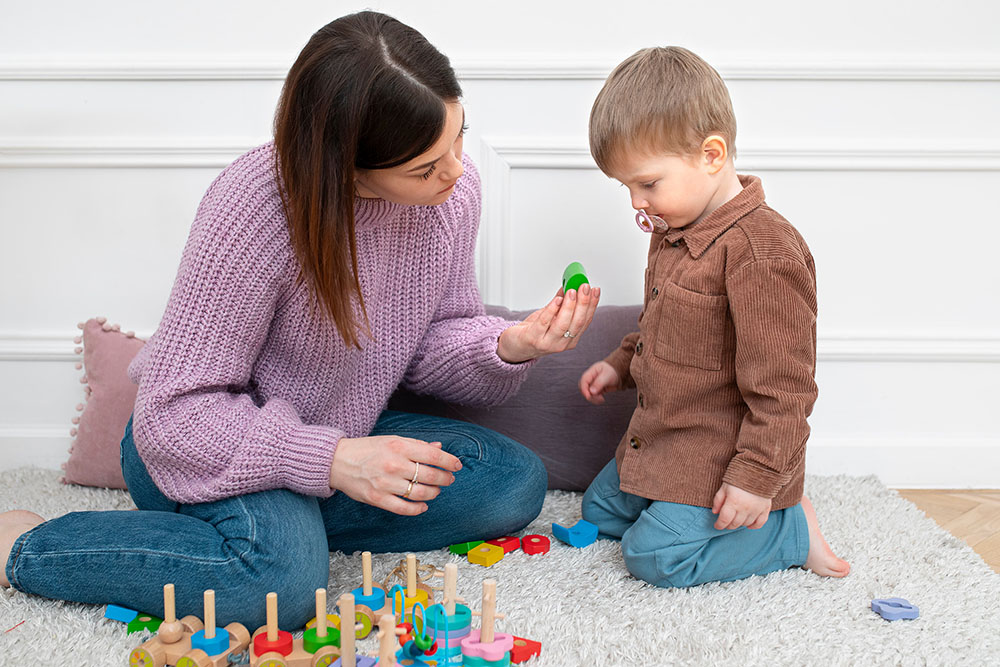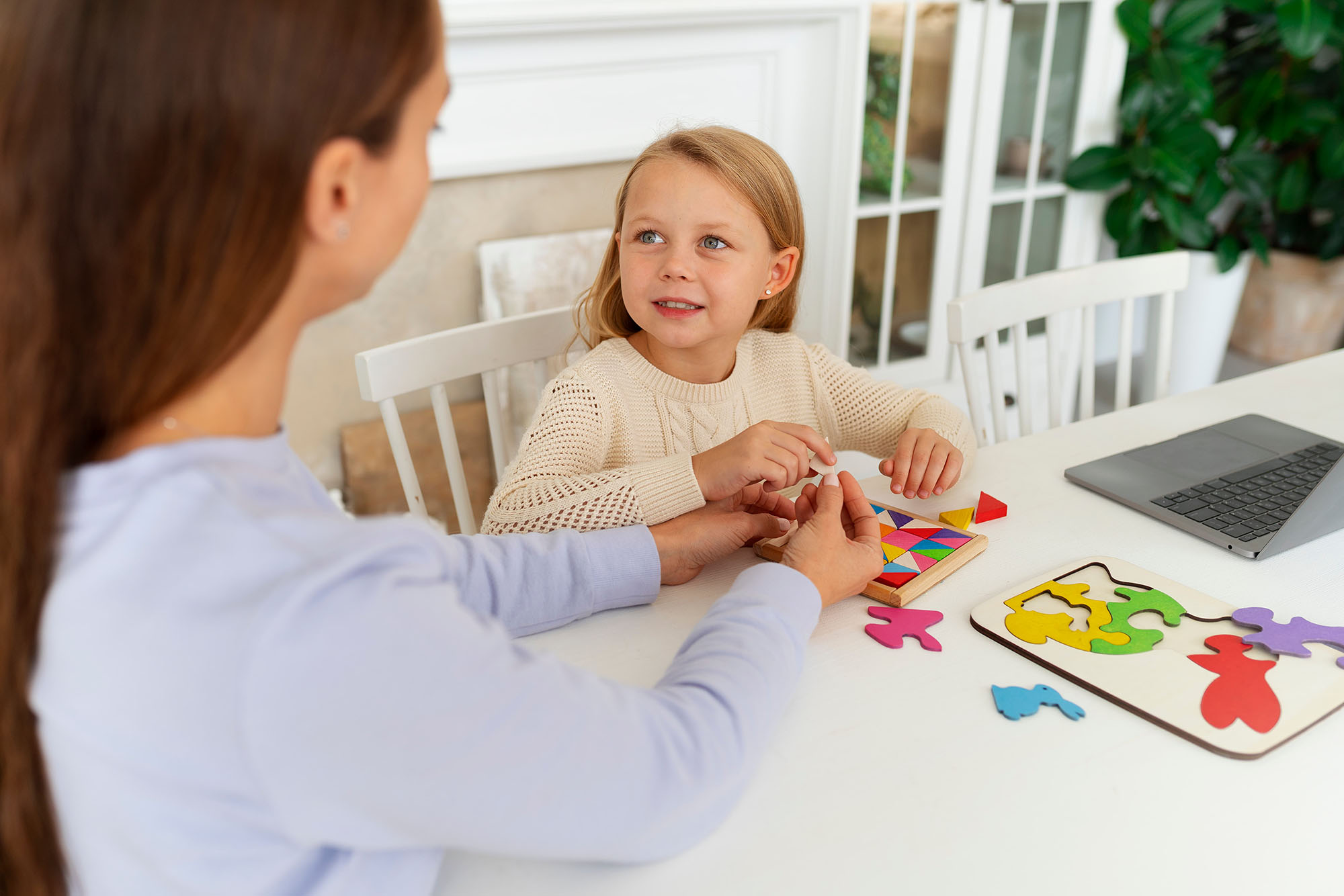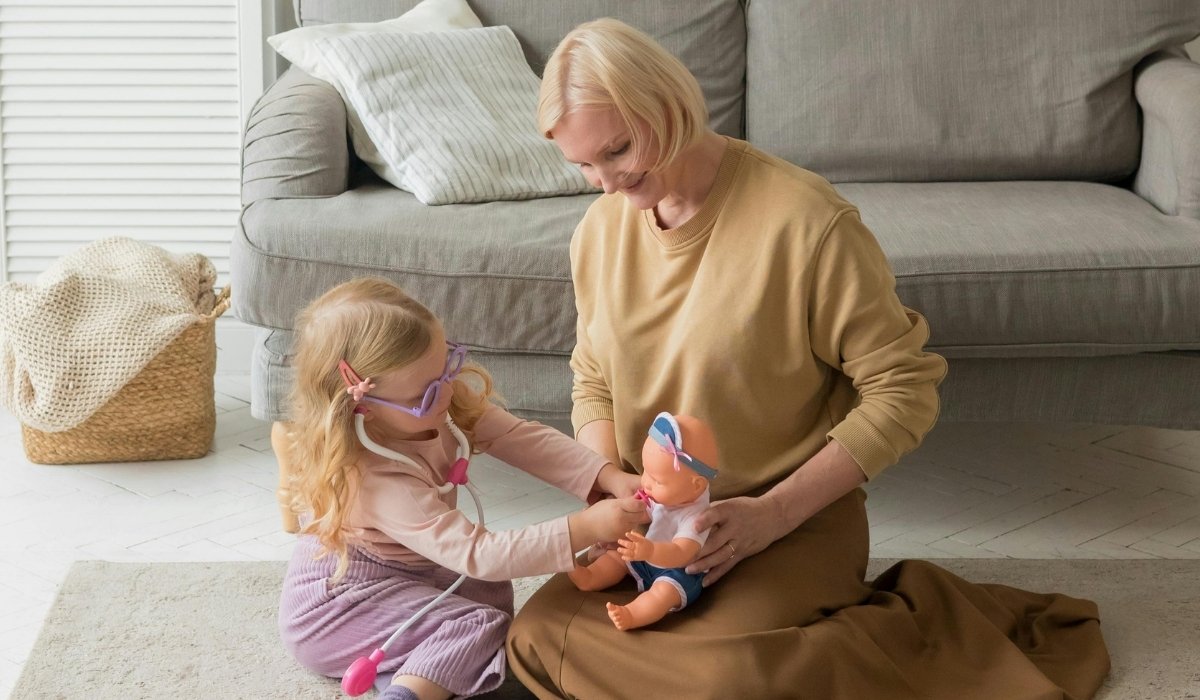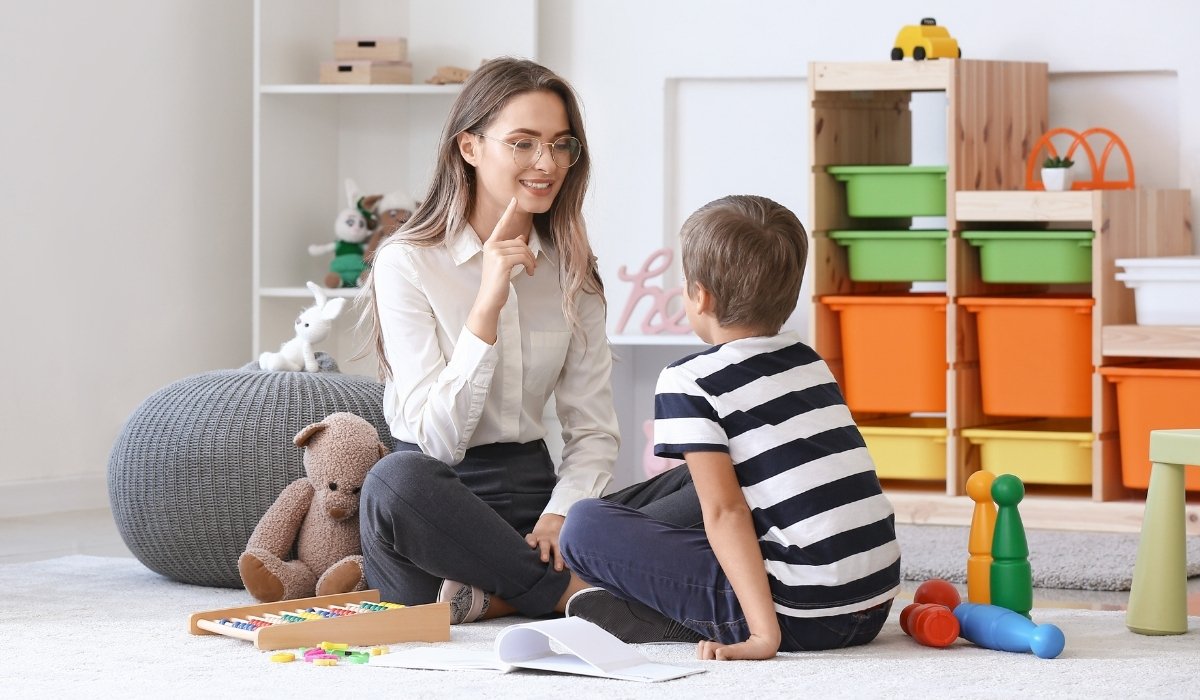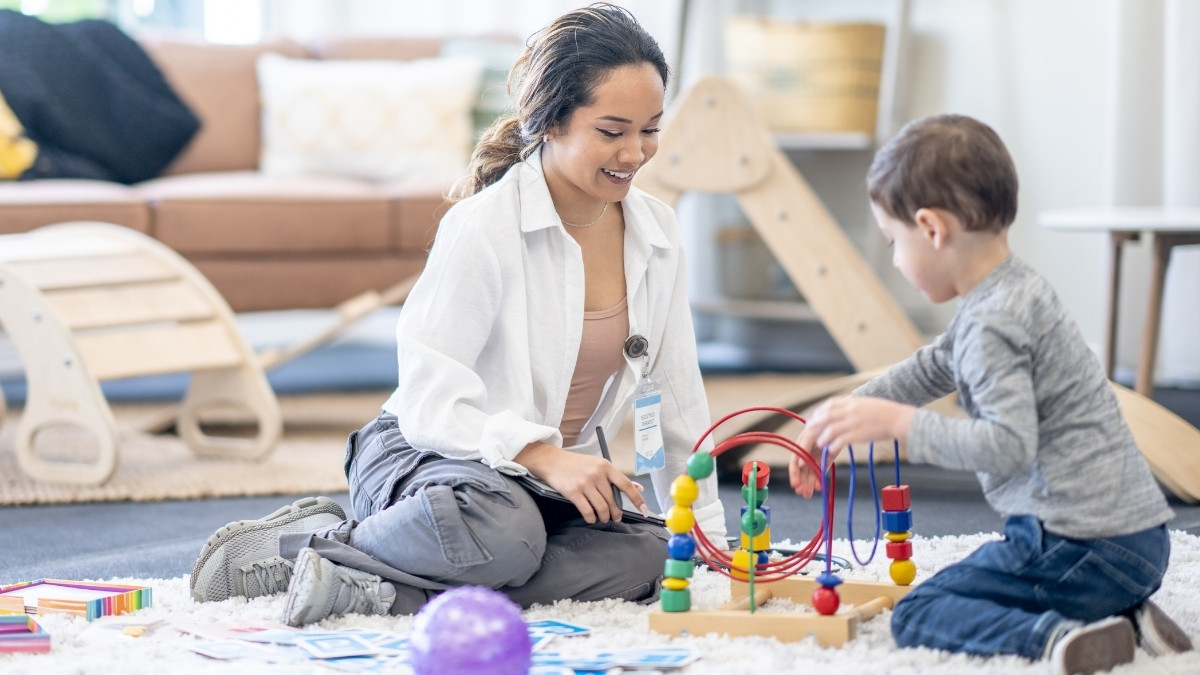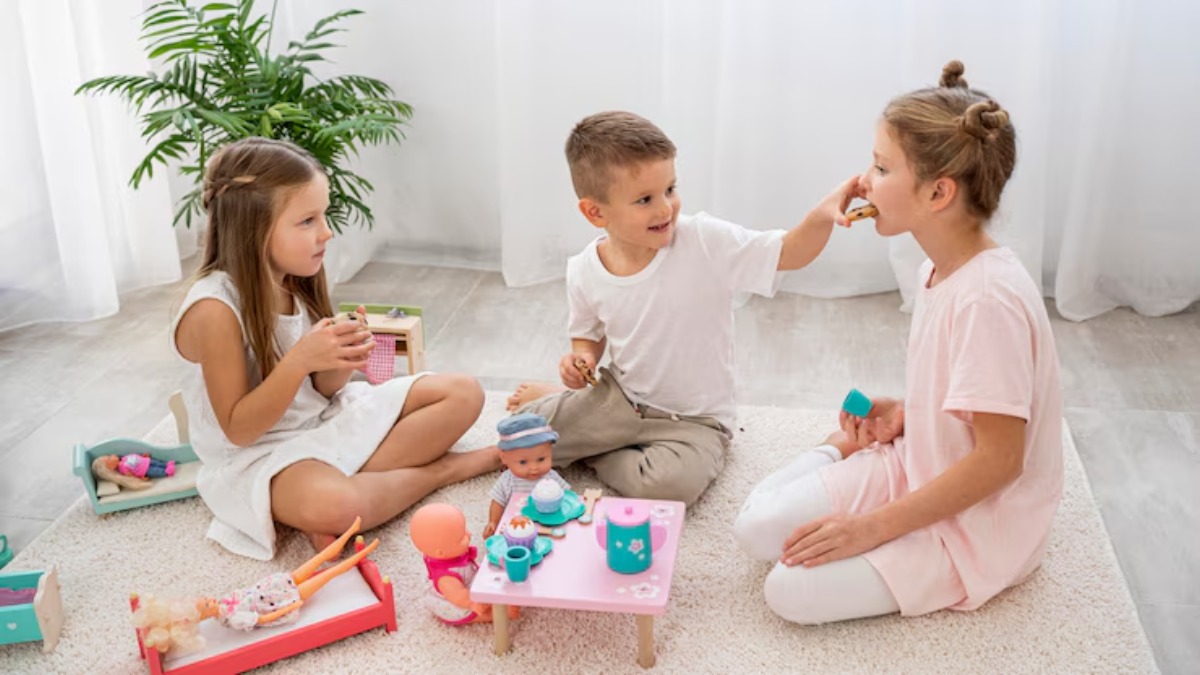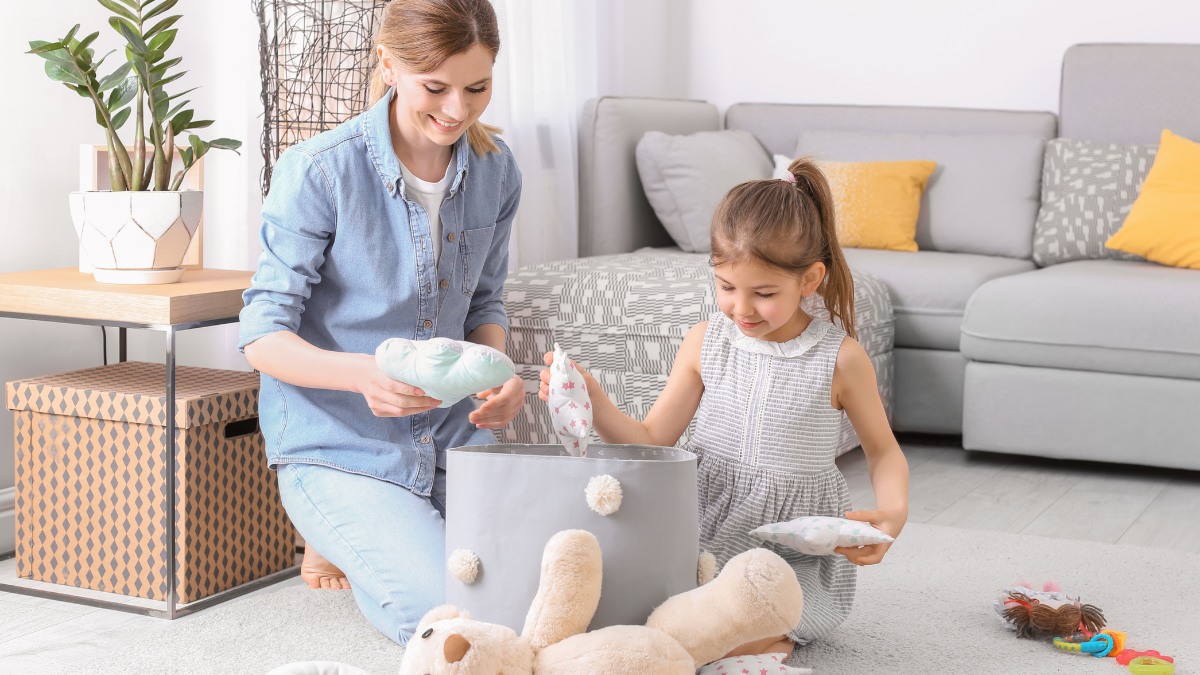How to Build Attunement Using DIR Floortime – Do’s & Don’ts
July 19, 2025
Make interactions more meaningful with practical do’s and don’ts for building emotional attunement through DIR Floortime.

Key Points:
- Attunement is the foundation of trust, emotional safety, and developmental growth in children.
- DIR Floortime strengthens attunement through play, emotional engagement, and following the child’s lead.
- Avoiding over-direction and ignoring cues are major don’ts that can hinder attunement.
A 2021 study found that infants whose caregivers showed high levels of emotional attunement had significantly stronger activation in the areas of the brain responsible for emotional regulation and social connection. These early interactions help wire the brain for empathy, language, and self-regulation—abilities that are critical to healthy development.
In children with developmental delays or autism spectrum disorders, intentional attunement strategies become even more essential, and that's where DIR Floortime comes in. This model of developmental therapy provides a structured but flexible way to build connection by entering the child’s world, emotionally and developmentally.
Before we explore how attunement shapes the core of DIR Floortime, it’s important to understand exactly what this connection looks like in action. Attunement isn’t just a nice-to-have—it’s the emotional anchor that allows all other developmental milestones to unfold. When a caregiver tunes into a child’s signals and responds with presence and intention, they’re laying the groundwork for trust, co-regulation, and deep engagement.
Let’s take a closer look at the role attunement plays in DIR Floortime—and why it’s the foundation that everything else is built on.
What is the Role of Attunement in DIR Floortime?
Attunement is the emotional glue in DIR Floortime. It allows caregivers to match the child’s mood, intentions, and rhythms, which forms the basis for co-regulation and engagement. In DIR Floortime, this connection is not just emotional—it’s developmental. When caregivers are attuned, they can “meet the child where they are” and gently stretch their capacities, one interaction at a time.
DIR (Developmental, Individual-differences, Relationship-based) Floortime prioritizes emotional connection before skill-building. That’s why attunement is step one. It enables:
- Emotional safety, which leads to shared attention
- Deepened trust, which invites spontaneous interaction
- A bridge to challenge and expand thinking
Without attunement, children may withdraw or display resistance. With attunement, they feel understood and are more likely to initiate or reciprocate.
Start with These Foundations to Build Attunement Effectively
Attunement doesn’t start with talking—it starts with observing. Many caregivers mistakenly believe they need to lead interactions. In DIR Floortime, the opposite is true. You follow the child’s lead to show that you see and value their internal world.
Before jumping into techniques, caregivers should ground themselves in these core foundations:
1. Slow Down and Observe
Notice your child’s facial expressions, body language, and play themes. These are their communication tools. Don’t interrupt—just take it in.
2. Mirror and Match
If the child is calm, match that. If they are excited, reflect their enthusiasm. This regulation builds safety and invites deeper interaction.
3. Affect-Based Connection
Use facial expressions, tone, and gestures to show you “get” what they’re feeling. Avoid flat or distracted responses.
4. Be Emotionally Available
Your full presence—not just physical but emotional—is what the child senses. That presence communicates “You matter.”
When these elements are in place, you’re ready to build attunement using active DIR Floortime techniques.
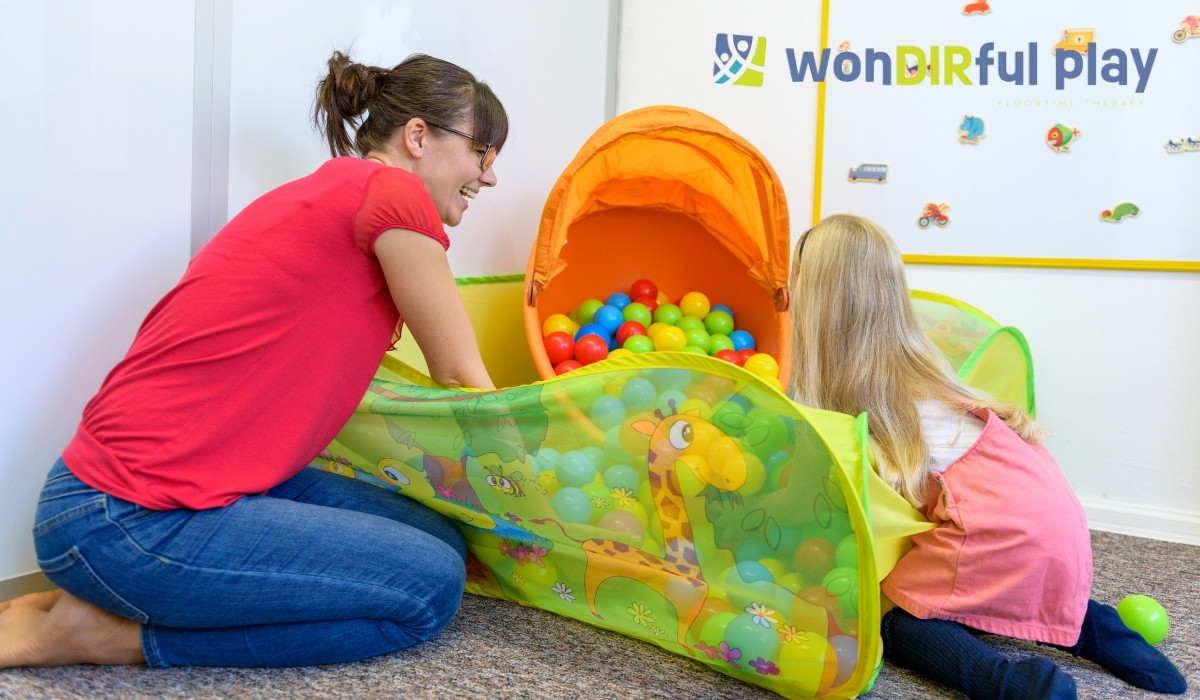
6 Do’s of Building Attunement with DIR Floortime
Establishing emotional resonance with your child is not about performing—it’s about tuning in. The following best practices are crucial in creating a space where meaningful developmental interactions can unfold.
1. Be Fully Present
Set aside distractions. Even subtle things like checking your phone or glancing at the TV can make a child feel unseen. In DIR Floortime, your presence is the primary tool for engagement.
2. Follow the Child’s Lead
If your child spins a toy instead of playing “correctly,” let them. That action holds meaning. You can join by spinning your own toy or narrating the experience. This validates their choices and deepens your shared emotional space.
3. Create Emotional Containment
This means providing a stable, regulated presence. When a child becomes dysregulated, your job is to stay calm—not escalate. Through co-regulation, the child learns to manage their own emotions.
4. Use Affect to Amplify Learning
DIR Floortime isn’t about instruction—it's about emotional signaling. If your child smiles at something, smile bigger. If they’re frustrated, reflect that with a concerned tone. This emotional mirroring helps wire their brain to understand feelings—both theirs and others’.
5. Engage in Intentional Play
Play is the platform for connection in DIR Floortime. Choose toys or themes that the child is already interested in. Instead of introducing a new toy, extend the play with additional props or shared roles.
6. Keep Emotional Themes Central
Play themes often reflect internal states. A child lining up animals might be seeking order. Use these cues to introduce gentle narrative or dialogue that names feelings or social roles.
5 Don’ts of Building Attunement in DIR Floortime
Even well-intentioned caregivers can unintentionally disrupt attunement. These missteps can make children feel misunderstood or pressured, which hinders engagement and trust.
1. Don’t Over-Direct
Avoid saying “Do this” or “Play this way.” This makes the interaction adult-centered, which contradicts the child-led foundation of DIR Floortime.
2. Don’t Rush or Interrupt
Children need time to process. Jumping in with suggestions or questions can break the rhythm of their thought or play process.
3. Don’t Ignore Emotional Cues
If your child pulls away or becomes frustrated, don't override it with cheerfulness or redirection. That invalidates their emotional state. Instead, reflect it with statements like, “That felt hard,” or “You didn’t like that.”
4. Don’t Use Praise as a Substitute for Presence
Saying “Good job!” without shared engagement can feel hollow. Instead, show authentic delight by saying things like “You really made that lion roar!” or “I loved how you made the train go fast!”
5. Don’t Force Eye Contact or Talking
Some children communicate through gestures or play themes. Forcing verbal or visual communication can cause shutdowns. Trust that engagement will deepen through emotional safety, not demands.
Ways to Measure and Support Attunement Over Time
Building attunement is a process, not a one-time event. Over time, you should see more reciprocity, shared joy, and flexibility in interactions. Here’s how to know your efforts are paying off:
5 Signs That Attunement is Working:
- Your child initiates interaction more frequently
- There are more back-and-forth “circles of communication”
- Emotional outbursts decrease during play
- They tolerate small challenges better (e.g., waiting turns)
- They engage in longer episodes of shared attention
Tools for Tracking:
- Video Journals: Record short sessions and look for increased complexity or engagement.
- Developmental Checklists: Use tools aligned with DIR principles (e.g., ICDL checklists) to monitor growth in functional emotional developmental capacities.
- Emotional Diaries: Track how often your child expresses emotions and how they are received by you.
The goal isn’t perfection—it’s progress. Regular observation helps you tweak your approach and celebrate relational growth.
Create Consistency Through Daily Attunement Rituals
DIR Floortime should not be limited to therapy sessions. You can build attunement in everyday routines, which reinforces safety and predictability.
Attunement Moments to Embed Daily:
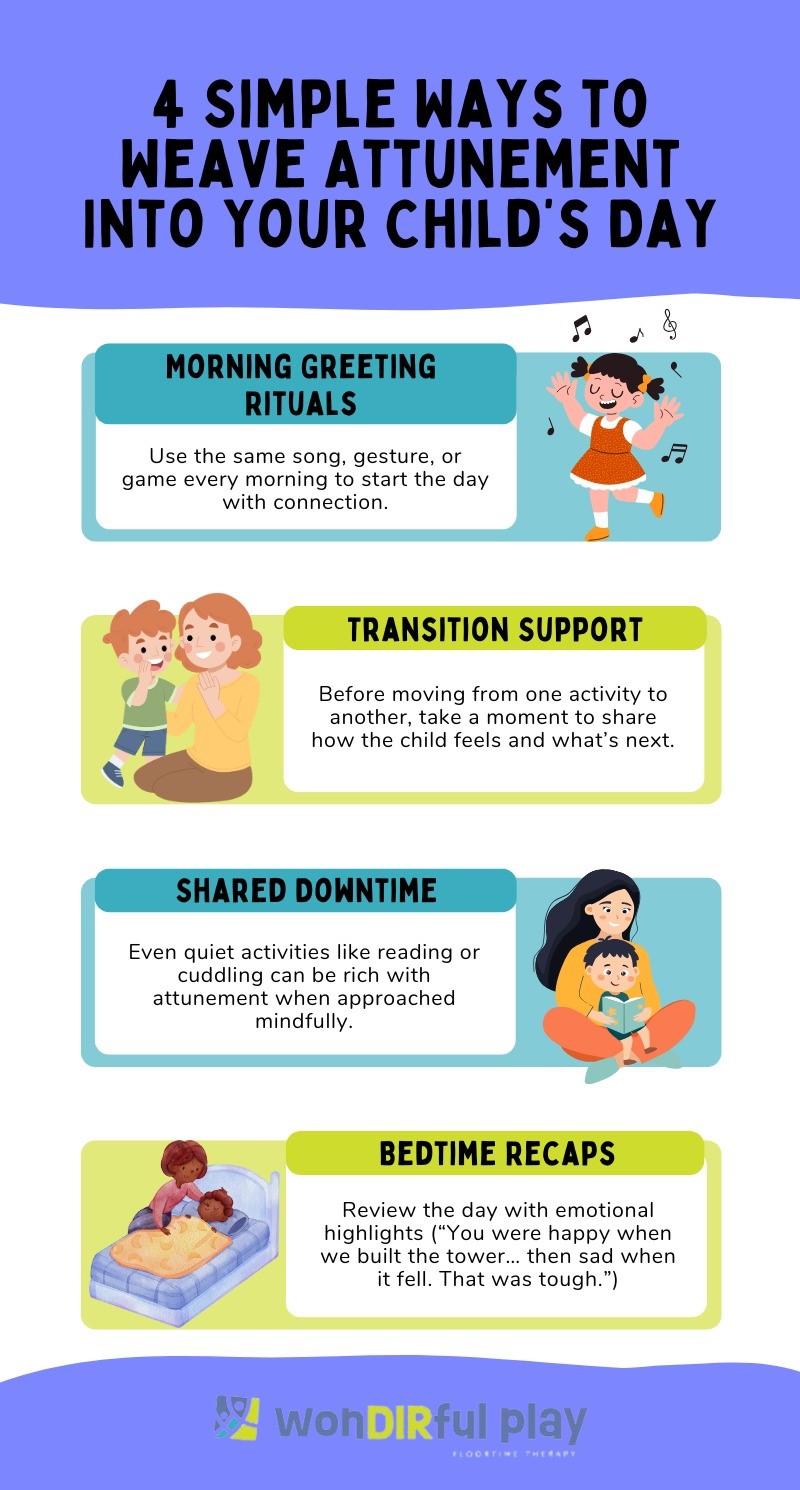
These small moments help scaffold the child’s ability to trust, reflect, and feel understood throughout the day.
Adjust Your Attunement Approach Based on Individual Differences
Every child brings their own sensory preferences, emotional history, and social temperament to interactions. What works for one child might overwhelm another.
Tailoring Your Attunement:
- Sensory-Sensitive Children: Use lower voice tones, fewer facial gestures, and slower movements.
- Socially Withdrawn Children: Start with parallel play and don’t rush eye contact or shared attention.
- Emotionally Reactive Children: Prepare for transitions with emotional cues (“In five minutes, we’ll clean up. That might feel hard, but I’ll help.”)
The Individual Differences framework in DIR Floortime reminds us that being attuned isn’t about doing more—it’s about doing what fits best for your child.
Reinforce Growth with Celebration and Reflection
Finally, attunement deepens when parents notice—not just the challenges—but the wins. Each moment of shared attention, each look exchanged, and each back-and-forth interaction is a brick in the relationship.
Keep a simple journal of moments that worked: times when your child smiled at your gesture, responded to your tone, or stayed with you longer. This helps you see the bigger picture and stay motivated.
Start Your DIR Floortime Journey With Us
At WonDIRfulPlay, we specialize in helping families implement the DIR Floortime approach with precision, compassion, and playfulness. Whether you’re just starting or want to deepen your practice, we’re here to guide you toward stronger attunement and developmental growth.
We work directly with families to customize DIR Floortime strategies based on each child's unique strengths and challenges. By focusing on emotional connection and interactive play, we help build the secure foundations needed for social, emotional, and cognitive growth.
Let’s work together to create attuned, joyful interactions—one play session at a time.
Reach out today to learn more about our DIR Floortime services in New Jersey.
Recent articles




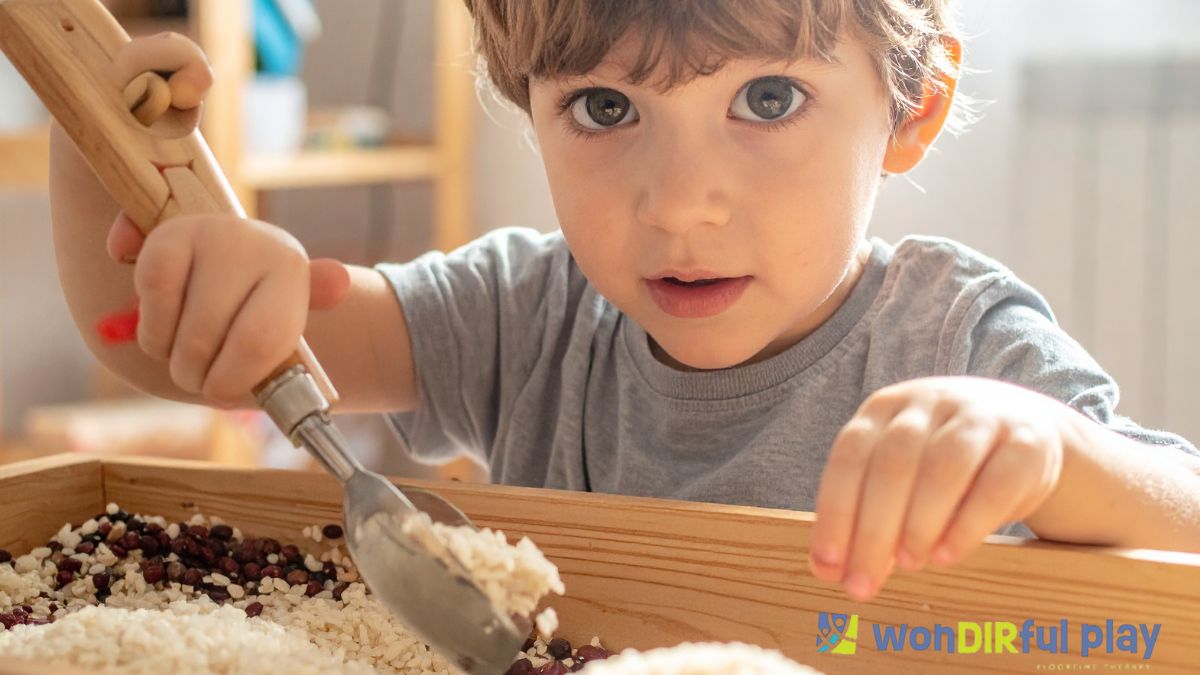
-ink.jpeg)
-ink.jpeg)
-ink.jpeg)
-ink.jpeg)
-ink.jpeg)
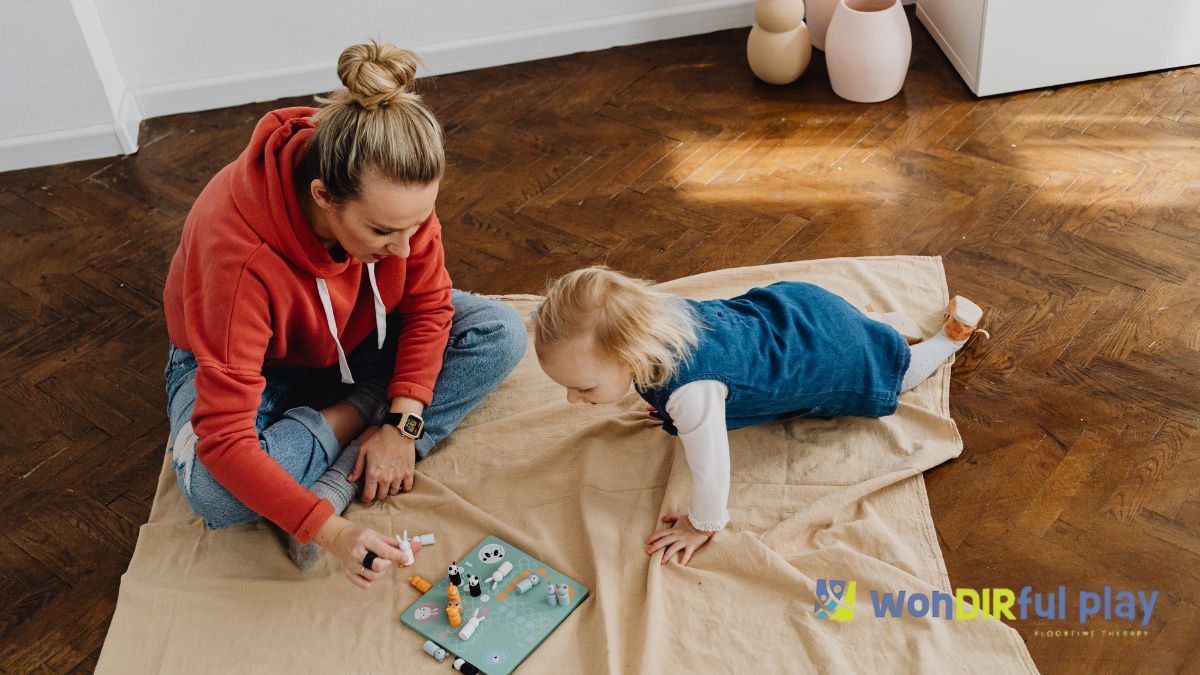
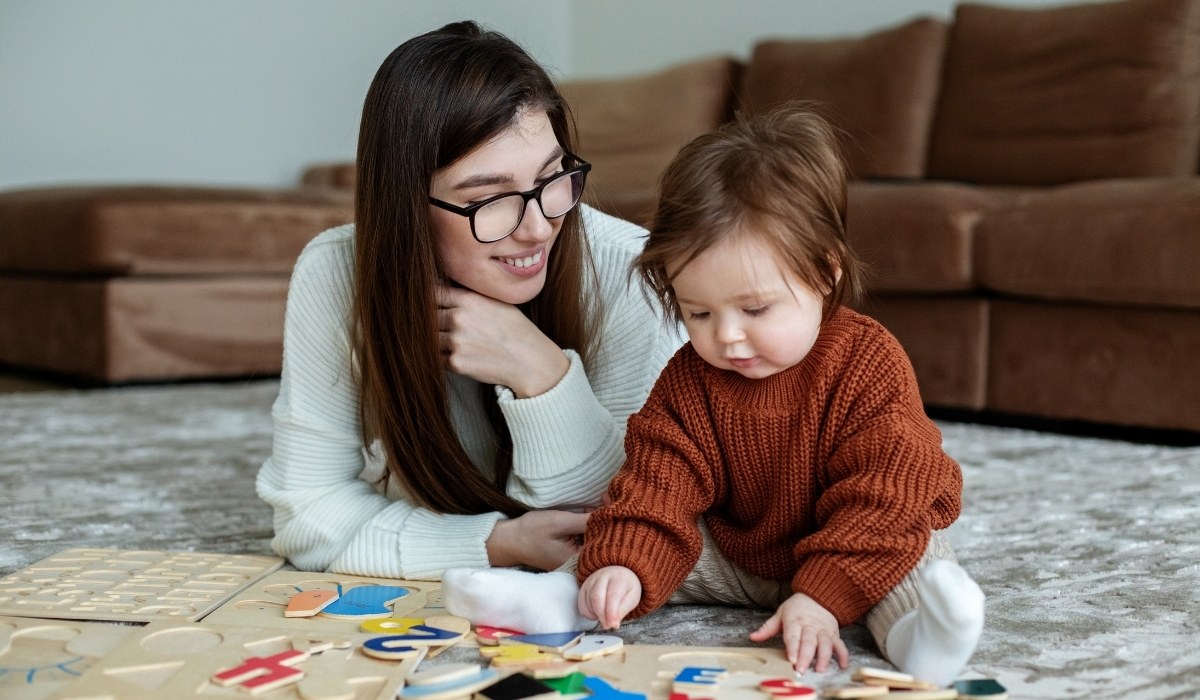
-ink.jpg)
-ink.jpeg)
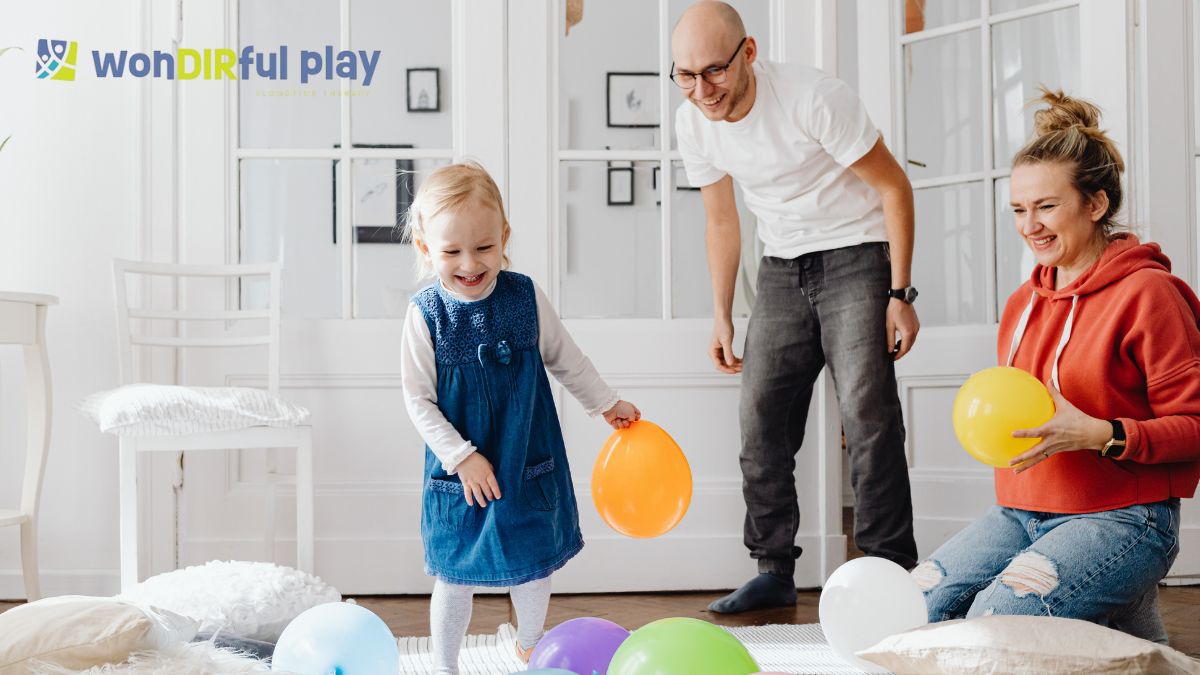
-ink.jpeg)
-ink.jpeg)
-ink.jpeg)
